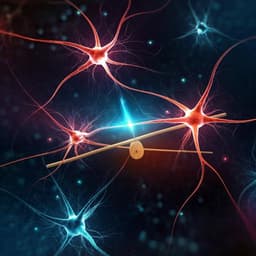
Biology
Synaptic plasticity-dependent competition rule influences memory formation
Y. Jeong, H. Cho, et al.
This exciting study conducted by Yire Jeong, Hye-Yeon Cho, Mujun Kim, Jung-Pyo Oh, Min Soo Kang, Miran Yoo, Han-Sol Lee, and Jin-Hee Han explores how synaptic plasticity in the lateral amygdala affects memory formation. By using optogenetic techniques, researchers demonstrated that enhancing specific synapses can preferentially influence memory encoding, unveiling a fascinating synaptic competition rule behind memory processes.
Playback language: English
Related Publications
Explore these studies to deepen your understanding of the subject.







